MediaPurgatory.com makes money by partnering with advertising networks and displaying ads on its articles. If you purchase anything by clicking on the ads featured in this article, the site’s owner may receive compensation.
Ah, yes. Fight Club. Perhaps no other popular movie has confused moviegoers more about its true message and meaning. What is the film really about? Is it about suppressed masculinity? Is it about anti-capitalism? How about anti-materialism? Or, is it about letting go of the conditioning society has forced upon us and “escaping the matrix”? Ask five people and you’ll get five different answers.
The film was so misunderstood when it was released in 1999, that fans were starting real-life fight clubs – completely missing the movie’s point.
However, some pretty good articles have been written about the film recently, with the authors more or less agreeing that Fight Club is essentially an anti-consumerist movie. They’re not far from the truth, as Fight Club does have a pretty strong anti-consumerist message, but calling the film simply “anti-consumerist” only scratches the surface and fails to explain the movie’s actual depth and complexity. It somewhat misses the point.
So, in this article, we will provide a detailed analysis of the film, explaining important scenes and pointing out details you should pay attention to, so you can get the ultimate explanation of what this cult classic is really about. That’s a bold promise, but bear with me, and by the end of the article, all the questions you ever had about Fight Club will be answered! So, let’s begin!
The Beginning of Fight Club Explained

So, we are introduced to the unnamed narrator (Edward Norton) and we learn that he has an unhealthy obsession with buying furniture, wardrobe, kitchen accessories, and other material goods. He is also stuck in a job he’s not very enthusiastic about and has a sleeping problem.
He cannot figure out what causes his insomnia, so he seeks help from a medical professional, but instead of prescribing pills, the doctor suggests he attend a testicular cancer support group if he wants to see what “real pain” looks like. For some reason, the narrator is intrigued by this.
He attends the support group, cries along with the other attendees, and afterward, he can “sleep like a baby.” Amazed by how effectively he was able to cure his insomnia this way, the Narrator starts attending other support groups, faking illnesses, and it seems he has finally found a solution to his sleeping problem (at least, for the time being).
It’s still unclear what causes his insomnia and why attending these support groups cures it, but the answer reveals itself later in the movie.
Next, the narrator meets Marla Singer (Helena Bonham Carter) – a faker like him – who begins attending the same support groups. The presence of another faker bothers the narrator because it presents a possibility of him getting exposed, and so, his insomnia returns.
However, he quickly solves this problem as well – he splits the support groups with Marla so that they never attend the same group. Soon after, while on a flight back home, the narrator “meets” the other important character in the story – Tyler Durden.
Shortly after meeting Tyler and landing in his hometown, the narrator learns that his baggage is lost and that his apartment got destroyed in an “accident.” In short, all the material possessions he was obsessed with were gone.
Needing a place to stay, he calls Marla but quickly remembers that he is avoiding her, so he hangs up and calls Tyler instead. And here we finally have the answer to what caused his insomnia in the first place and why going to support groups has helped him.
When a person loses his place of residence, the first thing he usually does is call a friend or a family member. But, who does the narrator call? He first calls a person he barely knows and is trying to avoid (Marla), and then a person who doesn’t even exist, except in his own head (Tyler).
So, now we know what bothered him in the first place! The narrator is a loner! He has no friends or family members, is stuck in an unfulfilling job he doesn’t care about, and has no meaningful life purpose. This creates a void in his life – a void that he tries to fill by buying material things, always thinking he is one more item away from feeling complete.
This, however, gives him only temporary fulfillment, until his void becomes “hungry” again, and it’s time to buy the next piece of furniture or the next kitchen accessory, and the vicious circle continues.
This void the narrator is stuck with at the beginning of the film is what Fight Club is really about and this is why the movie became so popular among the young men who saw it. Millions of us are stuck with the same void.
Consumerism is just a symptom – an attempt to fill the void with material goods that only temporarily numbs the pain but is never the solution in the long run. The Narrator’s sub-conscience recognizes that he is on this unhealthy path, creating Tyler Durden.
So who is Tyler Durden and what is his mission?
Tyler Durden Explained

Tyler Durden is the narrator’s sub-conscience’s response to his unhealthy obsession with material goods. He is not some intelligent life coach who is supposed to guide the Narrator through the complexities of life, but more of a knee-jerk reaction of the Narrator’s mind, with a mission to get him as far away from his consumerism as humanly possible. Or, as Tyler puts it – “to hit rock bottom.” He’s simply trying to get the narrator from one extreme to another.
After Tyler and the Narrator start living “together” in the decrepit house (which Tyler deliberately chooses because it’s the furthest thing from the narrator’s old apartment), they have this dialogue:
Tyler: I’ll say this about Marla: at least she is trying to hit bottom.
The Narrator: And I’m not?
Tyler: Sticking feathers up your but does not make you a chicken.
Tyler (rightfully) accuses the narrator of not being serious about giving up all material possessions, and that he would return to his old unhealthy consumerist habits if given the opportunity. He is (at least mentally) still attached to chasing status and having control over everything in his life, instead of simply “letting go” and “letting the chips fall where they may.”
Next, Tyler burns the narrator’s hand with a chemical, telling him not to fear death and to accept the pain of giving up status and material possessions. “Only after we’ve lost everything that we’re free to do anything.” After neutralizing the burn, he tells him “Congratulations! You’re one step closer to hitting the bottom.”
This battle culminates with Tyler and the Narrator driving in a car with two “Project Mayhem” members sitting in the back seats. The Narrator grabs the string wheel to regain control of the vehicle, but Tyler protests this, calls him “pathetic,” and accuses him of having learned nothing about “letting go.”
He then confesses that he blew up the Narrator’s apartment and says, “Hitting bottom isn’t a weekend retreat! It’s not a goddamn seminar! Stop trying to control everything and JUST LET GO!” The Narrator finally lets go of the steering wheel and lets the car crash. After having the “near-life experience,” Tyler and the Narrator return to the decrepit house, with Tyler delivering his final “stalking elk and wearing leather jackets” speech and disappears.
So, why does Tyler finally “leave” the Narrator after the car crash? Because, by letting go of the steering wheel, the Narrator has finally arrived at the exact place (mentally) where Tyler was guiding him all along. He has finally hit rock bottom and stopped chasing material goods and status. At last, Tyler’s mission was complete and he was no longer needed (at least for the time being).
Many critics and fans consider Tyler Durden to be the main inspiration for Heath Ledger’s Joker in The Dark Knight (2008), but, if we look at his character arc, he’s actually more similar to Ra’s al Ghul (Liam Neeson) – the previous villain in Batman Begins (2005).
Both characters serve as mentors to the protagonists in the movie’s first half, but turn villainous in the second. Both correctly point out certain problems that plague society, but the problem arises when they claim to have solutions. This is why they clash with the protagonists later on.
The Fight Club Explained
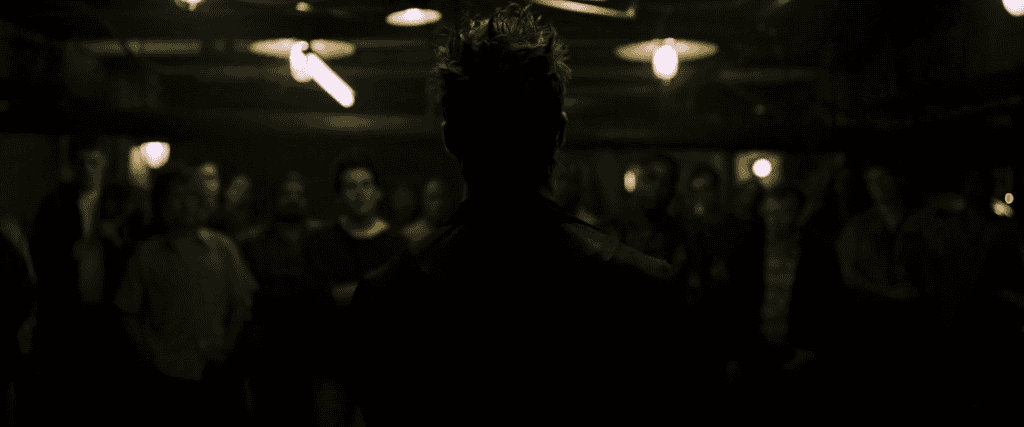
It was said that, at the beginning of the movie, the Narrator had insomnia because of his void:
- Not having friends or being part of a community; and
- Not having a life purpose
Joining the cancer support groups cured his insomnia (at least temporarily) because this satisfied one of his needs: having friends and being part of a community. For him, Fight Club was an upgrade from the support groups – why not engage in a fight with his friends and “feel like a man” instead of going to a bunch of sessions with sick people and crying all the time?
Now, of course, the movie exaggerates things a bit and makes it look like the guys are having the time of their lives doing this, but, in real life, getting punched and losing teeth doesn’t actually feel as good as the movie would like you to believe (shocking, I know!).
The fans who misunderstood the movie and formed their own fight clubs had to find this out the hard way. But, in the film, this provides the lost men with the community they crave and becomes a place where they can bond.
However, although the fight club solves the void’s first problem (providing community), it doesn’t do much for the second one – waiting for night to come so you can punch your friends and lose more teeth isn’t much of a life purpose. So how do you give all these men a life purpose?
Enter “Project Mayhem.”
Project Mayhem Explained

As stated previously, Tyler Durden is essentially a knee-jerk reaction of the Narrator’s mind, designed to lash out against anything materialistic and consumerist without considering the consequences. So, now that he has a whole tribe of lost men to manipulate, it’s no surprise he instructs them to do the same.
Whether it’s destroying luxury, overpriced vehicles, or causing damage to a bunch of Starbucks stores, he gives these directionless men a purpose. And it’s all fun and games until, inevitably, the consequences of their actions bite them in the ass.
When one of the most prominent members of Project Mayhem and one of the Narrator’s personal friends (Robert Paulson) gets killed, the Narrator is understandably outraged and demands that the shenanigans stop.
But as the members start chanting Robert’s name like a bunch of brainwashed cultists, he realizes that this has gone far beyond his control and he’s powerless to stop it.
This part of the movie is particularly important because it shows how “the void” creates a vulnerability that charismatic cult leaders can exploit, and why lots of people would be willing to follow them. It also shows why they would even tolerate their abusive behavior.
Not being part of a community and not having a purpose in life is a dangerous combination that the “Tyler Durdens” will always find a way to exploit.
The Twist Explained
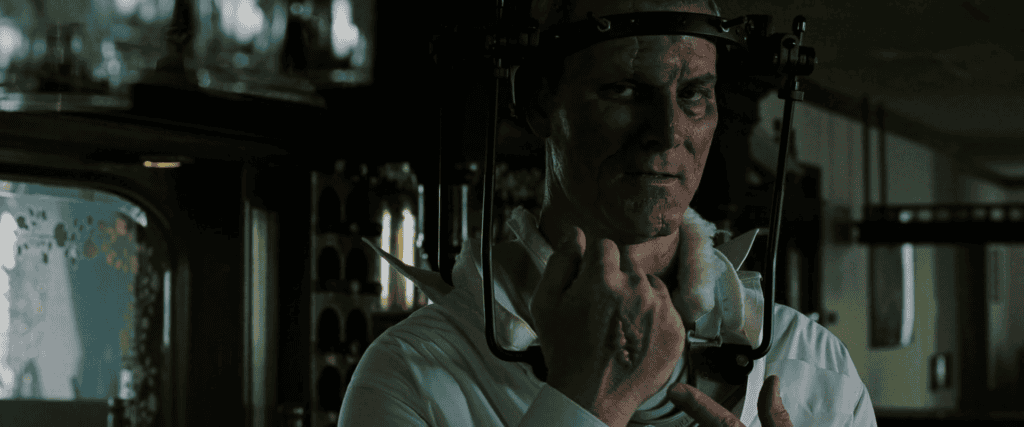
Once the Narrator realizes that he has developed a split personality and that Tyler is actually a part of his own mind that he cannot control, Tyler turns into a villain.
When it comes to Tyler, he doesn’t really have a realistic plan to end the consumerist society. He attempts to solve the problems like an angry teenager would.
Society produces overpriced vehicles? Destroy the overpriced cars with a baseball bat!
People go to luxury stores and buy goods they don’t really need? Set those stores on fire!
Hollywood brainwashes people with their movies to buy more luxury goods? Go to the video store and use magnets to ruin the DVDs!
All of these were the instructions Tyler gave his followers when he started “Project Mayhem”; needless to say, they only put bandages on the actual issue and did not solve anything.
Tyler’s final solution involves blowing up the credit companies’ buildings, because, according to him, this would “liberate” all people of the debt they have accumulated, not realizing that people won’t stop indebting themselves only because he blew up a bunch of corporate real estate.
The Narrator finally sees how wrong Tyler is and how crazy the whole thing has become. While he recognizes that he was in a very unhealthy place at the beginning when he was chasing material possessions, he now realizes that the other extreme (Tyler Durden) is just as flawed. This is why he “kills” Tyler in the end.
Fight Club’s Ending Explained
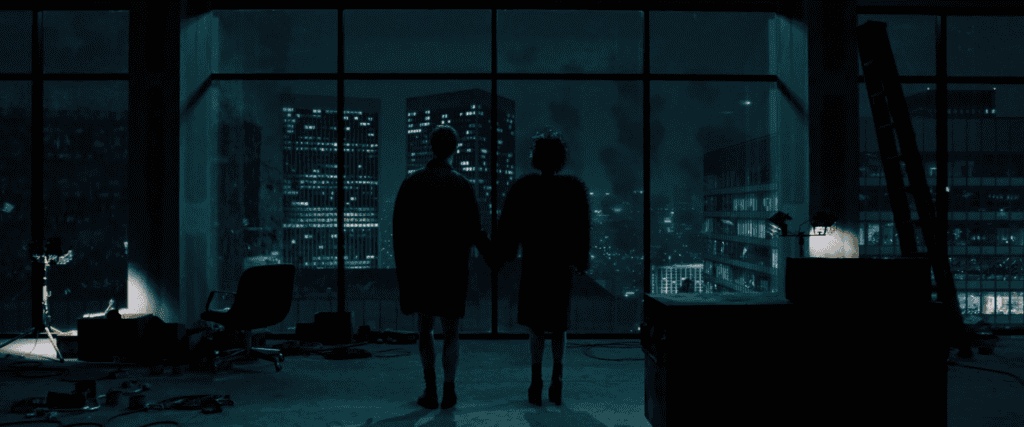
So, the Narrator has finally squashed his tendency to keep buying material goods, but he has also realized that the other extreme Tyler Durden was dragging him toward isn’t the answer either.
So, now that he’s free from both consumerism and Tyler, the question remains – what’s the cure for “the void”? If buying more stuff and chasing status is not the solution, and if Tyler Durden doesn’t have one, what is the actual solution? Well, it turns out the answer was right beside him all along.
It’s Marla!
If you want everything simplified, you can understand the basic structure of Fight Club by paying attention to these plot points:
- The Narrator leads an empty, purposeless life, without any friends, is stuck in a job he doesn’t like, and this causes his insomnia.
- The Narrator goes to support groups. This cures his insomnia because he feels part of a community and has friends with whom he can bond.
- The Narrator meets Marla Singer who also attends these support groups. He tries to avoid her because the presence of another faker ruins it for him.
- The Narrator’s sub-conscience creates Tyler Durden as a response to his unhealthy consumerism and “together” they form the Fight Club, and later, Project Mayhem. This gives him purpose and community, at least for the time being.
- The Narrator hits “rock bottom” and is finally free of his tendencies to try to satisfy the void with money and status.
- The Narrator realizes that Tyler actually “lives” in his head and that he doesn’t have the answer either.
- The Narrator gets rid of Tyler and realizes that Marla has been the right person for him all along.
- The Narrator finally has a companion who loves him for who he is and he no longer needs to attend cancer support groups to cure his sleeping problems.
- Is the Narrator perfect? No. Is Marla perfect? No. But, despite their many flaws, they are perfect for each other. He has finally found what he was looking for and his void is no more.
Conclusion

So what can we learn from Fight Club? Does the movie even claim to have solutions, or does it just point out the problems and leave us to make our own decisions?
Perhaps the biggest misunderstanding of Fight Club is that Tyler Durden has all the answers and is someone worthy of admiration. The fans who went on to form real fight clubs have fallen into this trap. They have mistaken Tyler’s charisma and confidence for competence, and have overlooked that there is a good reason why the Narrator gets rid of him in the end.
Only because some of his philosophy is good and useful – even a broken clock is right twice a day – in the end, Tyler is just an extremist, trying to solve a very complex issue in a very simple and immature way.
Every cult leader is right about some of the problems that plague society (this is how they lure people into their cult), but only because someone can point out a problem, doesn’t mean he also has the right solution.
Tyler’s observations that “the things you own end up owning you” and “you’re not your job” are useful, as they liberate people from the unnecessary burden that society places on them – to always chase status and material wealth – but forming fight clubs and destroying property is a definite no-no.
There is also a scene where Tyler points a gun at a store clerk, telling him to stop stalling and start pursuing his dream (in this case – becoming a veterinarian), but this is just not possible for most people. Most of us have bills to pay and simply don’t have the time to pursue our “dream job.” There will always be a discrepancy between what we think is the perfect job for us and the job opportunities that are available on the market.
So, if you have someone who pays your bills and puts food on your table, Tyler’s “solution” would be feasible for you, but otherwise, chances are you will just have to get a regular job you’re not necessarily in love with, and there’s nothing wrong with that.
If there is one lesson Fight Club has taught us, it’s not to seek the answer at the extremes: don’t be obsessed with status and material wealth, but you also don’t have to “hit bottom” to achieve this. Having a little status can be a good thing as long as you don’t tie your value as a human being to it.
Similarly, owning things is perfectly fine as long as you can function well and be happy without them. It’s OK if those things add something to your life, but it’s not OK for them to become your life.
Forming genuine relationships, joining communities (preferably not online communities), and always looking for the Marlas in your life is the correct way forward and the only one that will fill you with purpose and happiness.
So there you have it. Hopefully, you’ve found the article entertaining and informative, and all your questions about this legendary film have been answered. And since this is the end of the article, feel free to mentally insert the penis picture here and play Where is My Mind? by The Pixies. See you in the next one. Cheers!

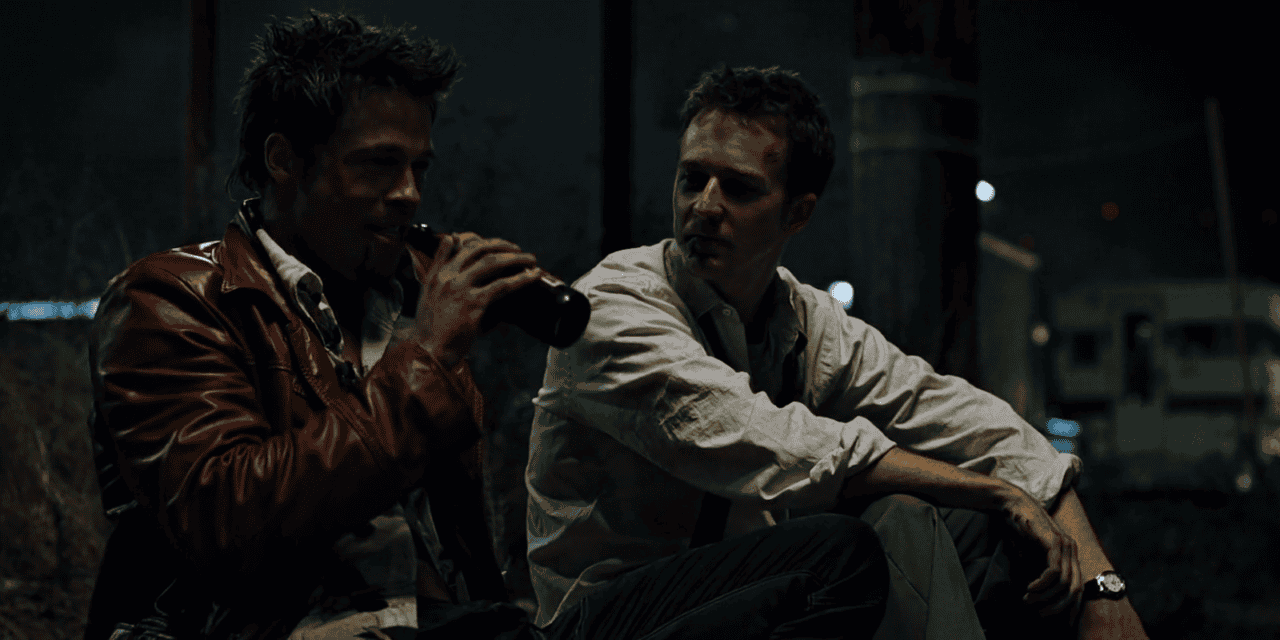
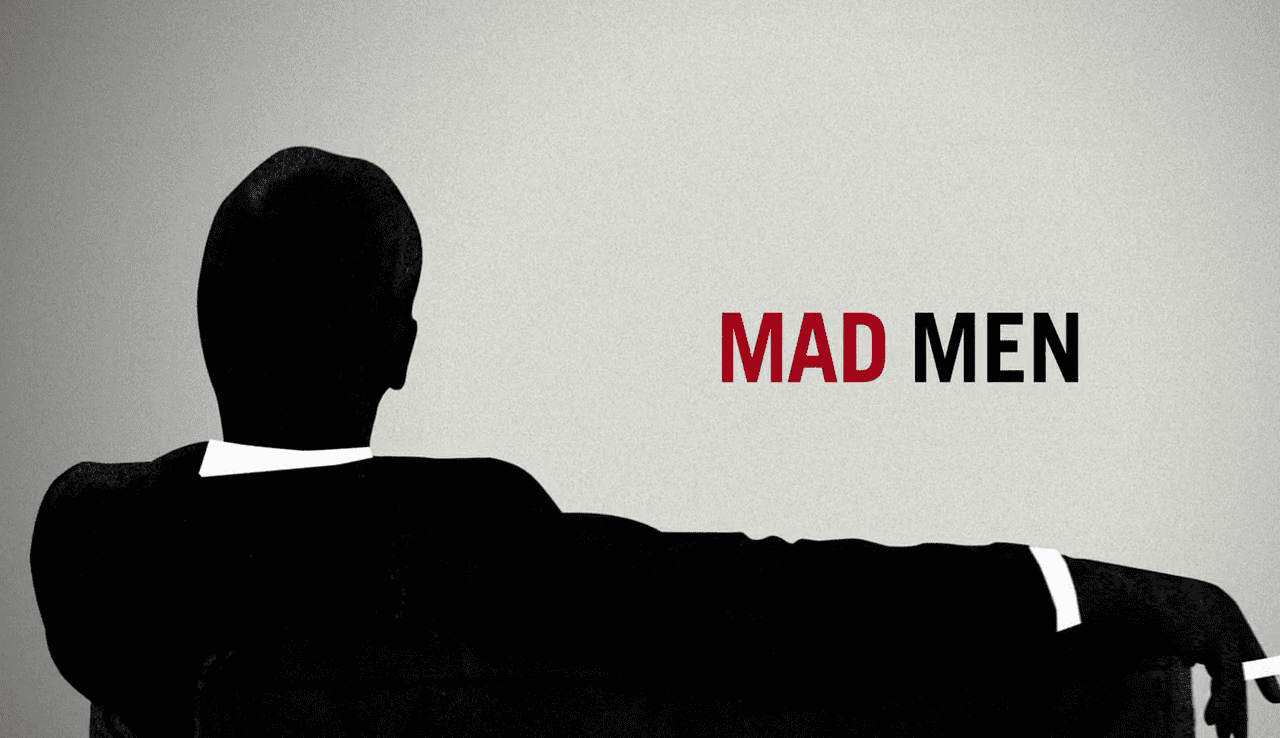

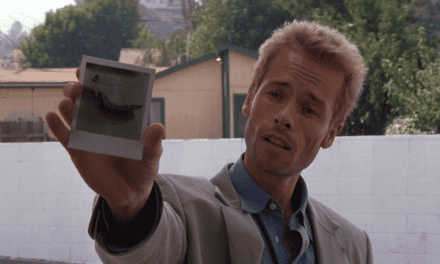

Recent Comments